Search Thermo Fisher Scientific
图: 1 / 16
CD185 (CXCR5) Antibody (14-9185-82) in Flow

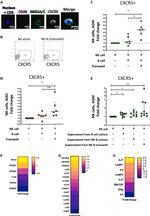

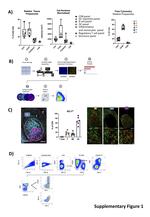
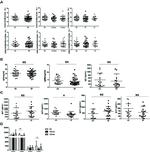
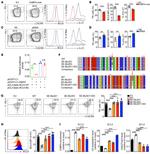
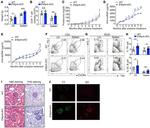
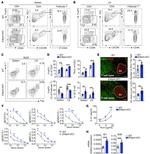
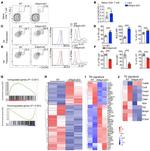
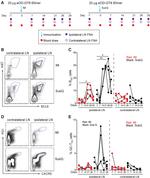

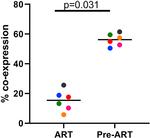
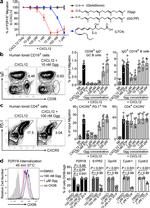
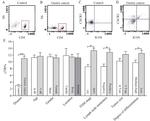

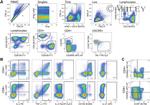
产品信息
14-9185-82
种属反应
已发表种属
宿主/亚型
分类
类型
克隆号
抗原
偶联物
形式
浓度
纯化类型
保存液
内含物
保存条件
运输条件
RRID
产品详细信息
Description: The MU5UBEE monoclonal antibody reacts with Human CD185. CD185, which is also known as C-X-C chemokine receptor 5 (CXCR5) and Burkitt lymphoma receptor 1 (BLR1), is a seven transmembrane G protein-coupled receptor originally identified in Burkitt's lymphoma. In peripheral blood, CXCR5 is expressed on B cells, CD4+ T cells (but not Th1 or Th2 cells), as well as on a subpopulation of memory (CD45RO+) T cells. CXCR5+ circulating T cells are in a resting state and migrate to the lymph nodes due to expression of CCR7 and CD62L. In tonsil, CXCR5 is expressed on nearly all CD4+ cells along with CD45RO and such activation markers as CD69 and ICOS. Tonsillar CXCR5+ cells have been shown to induce antibody production when co-cultured with B cells, thus supporting their role in providing B cell help. Furthermore, this chemokine receptor plays a critical role in lymphocyte trafficking, in particular T cell migration into the B cell follicles of germinal centers in response to CXCL13, making CXCR5 an established marker of follicular helper T cells.
Applications Reported: This MU5UBEE antibody has been reported for use in flow cytometric analysis.
Applications Tested: This MU5UBEE antibody has been tested by flow cytometric analysis of human peripheral blood cells. This can be used at less than or equal to 0.25 µg per test. A test is defined as the amount (µg) of antibody that will stain a cell sample in a final volume of 100 µL. Cell number should be determined empirically but can range from 10^5 to 10^8 cells/test. It is recommended that the antibody be carefully titrated for optimal performance in the assay of interest.
Purity: Greater than 90%, as determined by SDS-PAGE.
Aggregation: Less than 10%, as determined by HPLC.
Filtration: 0.2 µm post-manufacturing filtered.
靶标信息
CXCR5 (C-X-Chemokine Receptor Type 5, CD185) also known as Burkitt lymphoma receptor 1 (BLR1) belongs to the CXC chemokine receptor family. CXCR5 is a G protein-coupled seven transmembrane receptor for chemokine BLC. CXCR5 gene is specifically expressed in Burkitt's lymphoma and lymphatic tissues, such as follicles in lymph nodes, as well as in spleen. Studies of CXCR5 suggest that it plays an essential role in B cell migration. CXCR5 expression has been reported in human blood and salivary gland and in animal lymphatic organs, blood, bone marrow, brain, liver, lymph node, skin, spleen, stomach, and tonsil. ESTs (expressed sequence tags) have been isolated from human brain, germ cell, lung, lymph, and pancreas. G-protein Coupled Receptors (GPCRs) comprise one of the largest families of signaling molecules with more than a thousand members currently predicted to exist. All GPCRs share a structural motif consisting of seven membrane-spanning helices, and exist in both active and inactive forms. An array of activating ligands participate in the conformation of GPCRs which leads to signaling via G-proteins and downstream effectors. Research studies have also shown the vast series of reactions which participate in the negative regulation of GPCRs. This "turn-off" activity in GPCRs have tremendous implications for the physiological action of the cell, and continues to drive pharmacological research for new drug candidates. Two blockbuster drugs which have been developed as GPCR-targeted pharmaceuticals are Zyprexa (Eli Lilly) and Claritin (Schering-Plough) which are used in mental health and allergy applications, respectively.
仅用于科研。不用于诊断过程。未经明确授权不得转售。
生物信息学
蛋白别名: Blr-1; Burkitt lymphoma receptor 1; Burkitt lymphoma receptor 1, GTP binding protein (chemokine (C-X-C motif) receptor 5); Burkitt lymphoma receptor 1, GTP-binding protein; C Cmotif chemokine; C X C motif chemokine; C-X-C chemokine receptor type 5; CC motif chemokine; CCmotif chemokine; CD185; CD185 antigen; chemokine (C-X-C motif) receptor 5; CXC; CXC motif chemokine; CXC-R5; CXCR-5; Fusin; GPR9; HUMSTR; LESTR; MDR-15; Monocyte-derived receptor 15
基因别名: BLR1; CD185; CXCR5; EGK_06966; MDR15
UniProt ID: (Human) P32302
Entrez Gene ID: (Rhesus monkey) 701792, (Human) 643



